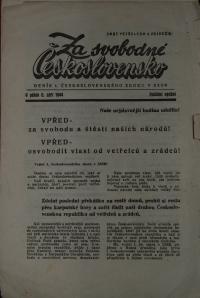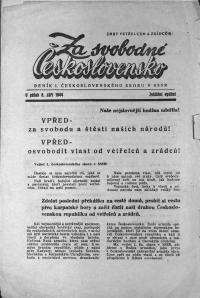“I asked Brezhnev not to shoot at the Slovak planes. ‘Because,’ I told him, ‘there will be a large group of Slovak planes deserting to your side.’”
Jan Setvák was born in 1915 in Bošáca, Slovakia. After He had finished the basic school in Mové mesto nad Váhom he was enrolled at a flight school in Prostějov. He graduated successfully and then he served in the Czechoslovak Army and later in the Slovak Army as a fighter pilot. He fought at the Eastern Front in the Caucasus area. He did not agree with the strategic aims of the Slovak Army from the very beginning but didn’t manage to desert to the other side until the Slovak National Uprising. He was trained at Soviet planes and he fought under the Czechoslovak squadron in the air battles over North Moravia. After the war, he became a painter. Jan Setvák died on September 25, 2012.

